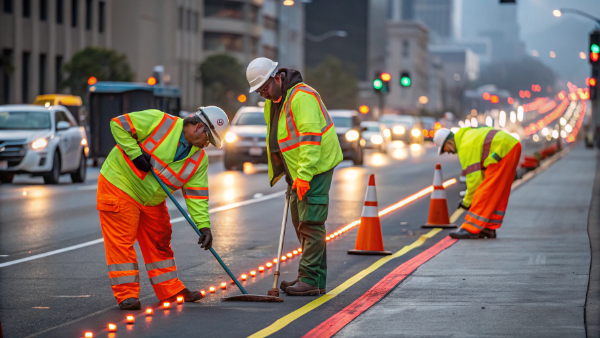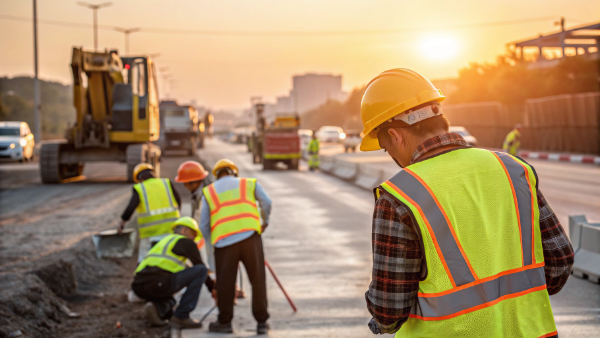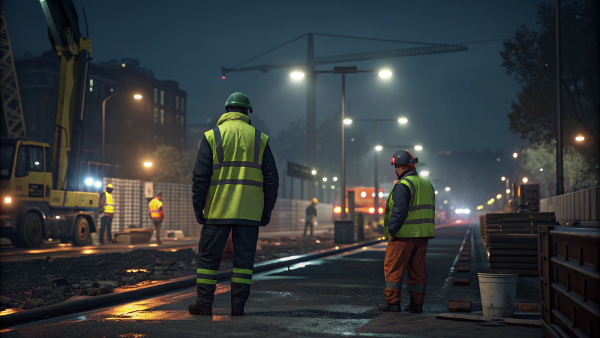Having trouble getting branded workwear that is both compliant and professional? It’s a common challenge. We make the customization process simple and clear for you.
To customize branded high-visibility workwear, you first select a compliant garment and a reliable supplier. Then, you provide your logo file and placement details. After you review and approve the design proof, your order moves into production and is delivered to you.
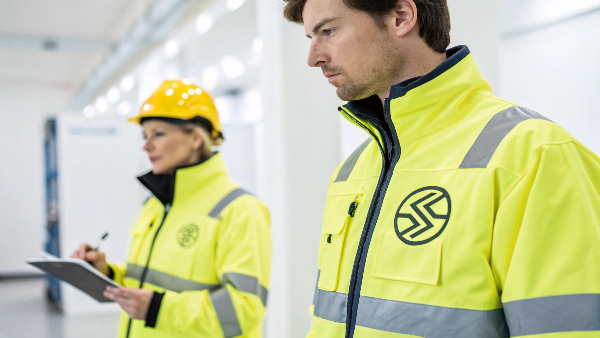
Getting these steps right is vital. A bad customization job can void your garment's safety certification, putting your team at risk and your company in legal trouble. Many suppliers don't understand the rules, but we've been doing this for over a decade. We help clients like Danny Cheng from California navigate these rules every day. He needs his apparel to meet ANSI standards and look unique, and we deliver. Let’s dive deeper into the questions we get asked all the time.
What must be done with high-visibility clothing to maintain safety?
Worried your custom logos will make your safety gear1 non-compliant? This is a valid concern. Proper placement and material choice are crucial for maintaining safety standards.
To maintain safety, logos must never cover reflective materials. The background fabric must also meet the minimum area requirements for its class after customization. Always use a supplier who understands and follows ANSI/ISEA 107 guidelines for alterations.
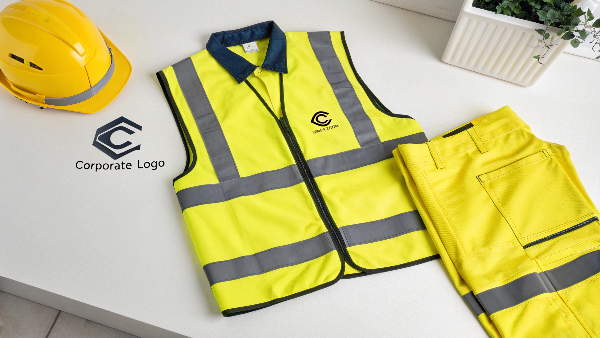
The rules for customizing high visibility clothing are there for one reason: to save lives. The fluorescent and reflective materials2 are scientifically designed to make a worker visible. If a logo covers these materials, it reduces the garment's effectiveness. This is especially true for the reflective tape, which is critical for nighttime visibility. Placing a logo over it is a major safety violation. As a manufacturer, we are responsible for educating our clients on these rules. We guide them to ensure their brand gets visibility without compromising worker safety3.
Logo Placement and Compliance
The placement of your logo is the most important factor. You have space on the fluorescent background material, but you must avoid the reflective tape. We also have to check that the logo doesn't reduce the total area of fluorescent material4 below the minimum requirement for its class.
| Placement Area | Correct? | Why? |
|---|---|---|
| On fluorescent background | Yes | This is the ideal area and does not obstruct reflective tape. |
| Over reflective tape | No | It blocks retroreflection and violates ANSI/ISEA 107 and CSA Z965 standards. |
| On a non-hi-vis panel | Depends | The garment might be reclassified if the fluorescent area is reduced. |
Material Integrity
We also consider the material of the logo itself. A thick, non-breathable logo patch can affect the comfort and moisture-wicking properties of a garment. That's why we offer various methods like screen printing and heat transfer, which maintain the fabric's flexibility and performance.
What are the three classes of high-visibility clothing6?
Confused about which class of hi-vis gear your team needs? Choosing the wrong one can risk safety and compliance. We can help clarify the differences.
Class 1 is for low-risk areas with slow traffic. Class 2 is for workers needing more visibility in moderate weather and busier areas. Class 3 offers the highest visibility for high-speed traffic zones and poor conditions, requiring the most coverage.
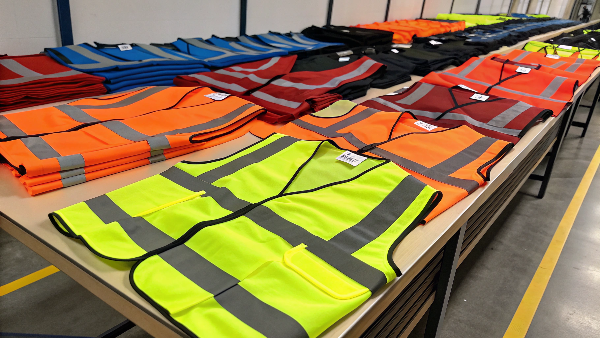
Choosing the right class is not just a suggestion; it's often a legal requirement based on the work environment. A worker in a warehouse has very different visibility needs7 than a highway flagger at night. The ANSI/ISEA 107 standard defines these classes to make the choice clear. Each class has specific minimum requirements for the amount of fluorescent background material and retroreflective tape8. As a manufacturer, we produce compliant garment9s in all three classes. We help our clients select the right class for their teams to ensure they are both safe and compliant.
Understanding Each Class
The main difference between the classes is the amount of visible material required. More material equals more visibility from farther away.
| Feature | Class 1 | Class 2 | Class 3 |
|---|---|---|---|
| Minimum Background Material | 0.14 m² (217 in²) | 0.50 m² (775 in²) | 0.80 m² (1240 in²) |
| Minimum Reflective Material | 0.10 m² (155 in²) | 0.13 m² (201 in²) | 0.20 m² (310 in²) |
| Typical Environment | Low traffic, < 40 km/h | Higher traffic, > 40 km/h | High-speed traffic, > 80 km/h |
| Example Worker | Parking lot attendant | Roadway construction crew | Highway maintenance worker |
For Class 3, the standard also requires material on the sleeves and trousers to outline the full human form.
How does high-visibility clothing work?
Ever wonder what makes hi-vis clothing so bright? It feels like magic, but it's pure science. Understanding this helps you choose the best and most effective gear.
It works in two ways. Fluorescent material converts invisible UV light into visible light, making you stand out in daylight. Retroreflective tape uses glass beads or prisms to bounce light directly back to its source, like car headlights, ensuring visibility at night.
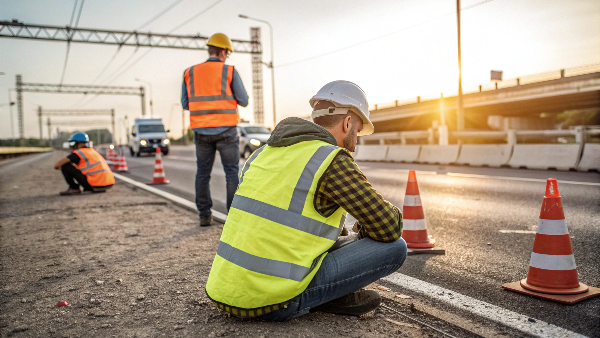
The effectiveness of high-visibility clothing comes from a combination of two very different technologies working together. One is designed for daytime, and the other is for nighttime. The goal is 24-hour visibility. In our ISO-certified lab, we use over 75 testing devices to measure the performance of our fabrics. We test for luminosity, colorfastness, and reflectivity to ensure every garment we produce meets or exceeds global standards. This guarantees that the science behind the materials is working correctly, so your team is always seen.
The Power of Fluorescence (Daytime)
Fluorescent colors appear incredibly bright because they do something special with sunlight. The dyes absorb the sun's invisible ultraviolet (UV) energy. They then re-emit that energy as longer-wavelength, visible light. This makes the fabric glow, especially at dawn and dusk when UV light is plentiful but visible light is low.
The Science of Retroreflection (Nighttime)
Retroreflective tape is designed for low-light conditions. Unlike a mirror that bounces light away at an angle, retroreflective material bounces light directly back to the source.
| Technology | How it Works | Best For |
|---|---|---|
| Fluorescence | Converts UV light to visible light. | Daytime, Dawn, Dusk |
| Retroreflection | Bounces light directly back to the source. | Nighttime, Low Light |
This is achieved using either tiny glass beads or microscopic prisms. When a car's headlights hit the tape, the light travels back to the driver's eyes, making the worker appear brightly illuminated.
What is the ANSI standard for high-visibility clothing?
Shipping to the US? ANSI/ISEA 107 is the standard you cannot ignore. Non-compliance can lead to rejected shipments, fines, and serious legal issues if an accident occurs.
The ANSI/ISEA 107 standard is the American benchmark for high-visibility safety apparel. It specifies the required amounts of fluorescent and retroreflective materials for each class (1, 2, 3) and sets performance criteria for color, reflectivity, and durability.
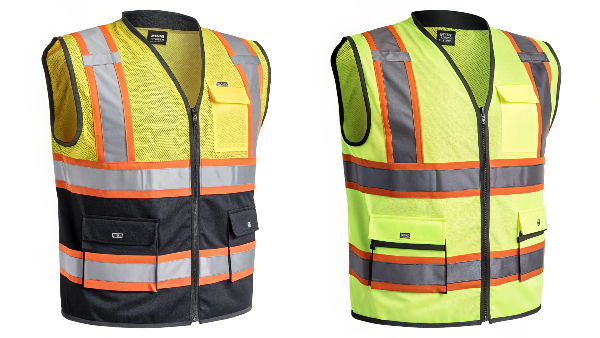
For our clients in the United States, like Danny Cheng, compliance with ANSI/ISEA 107 is non-negotiable. It is the core of their business. The standard is very detailed, covering everything from the precise shade of fluorescent yellow-green to the number of washes the reflective tape must endure. The standard also defines Garment Types based on the expected work environment. This helps buyers match the right product to the right hazard level. We built our production process around these rules, and our triple-inspection system ensures every garment that leaves our factory is compliant.
Key Components of ANSI/ISEA 107
The standard groups garments into "Types" to clarify their intended use.
| Garment Type | Intended Use | Example |
|---|---|---|
| Type O (Off-Road) | Workers not exposed to roadway traffic. | Warehouse staff, factory workers. |
| Type R (Roadway) | Workers exposed to traffic from public access right-of-way. | Road construction, utility crews. |
| Type P (Public Safety) | First responders who have competing hazards. | Police, firefighters, EMS. |
Type R and Type P garments are then assigned a Class (1, 2, or 3) based on the amount of visible material they have. Type O garments are only designated as Class 1.
What is the CSA standard for high-visibility clothing?
Selling to the Canadian market? You need to know about CSA Z965. It is different from the ANSI standard, and mistakes can be costly for your business.
The CSA Z96 is Canada's national standard for high-visibility safety apparel. It outlines classes of garments and specifies retroreflective tape patterns, like the distinctive "X" on the back, to show which way a worker is facing.
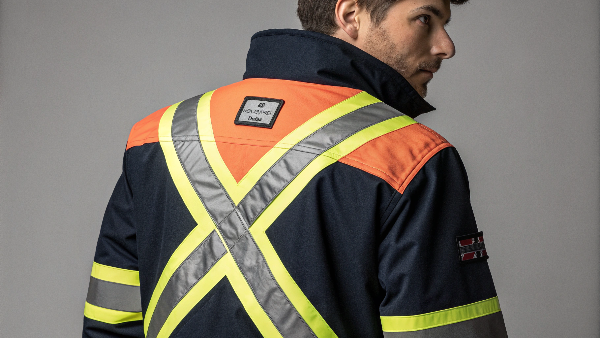
While many of the principles of visibility are the same, the Canadian CSA Z96 standard has some unique requirements that set it apart from ANSI/ISEA 107. The most notable feature is the specific configuration of the retroreflective striping. This isn't just for decoration; it's a critical safety feature designed to communicate information to vehicle operators. For example, the "X" on the back instantly tells a driver if a worker is facing away from them. At Vissafety, we have dedicated production lines for CSA-compliant apparel to ensure these specific patterns are applied correctly every single time.
Unique Features of CSA Z96
The striping configuration is the biggest difference. The pattern is designed to provide a 360-degree view of the worker and clearly outline the human form.
| CSA Z96 Feature | Description | Purpose |
|---|---|---|
| "X" on Back | Two diagonal stripes forming an "X". | Indicates the worker is facing away. |
| Two Vertical Front Stripes | Stripes running from the shoulder to the waist. | Provides full frontal visibility. |
| Waist and Arm/Leg Bands | A horizontal stripe around the waist and bands on arms/legs. | Outlines the human form at a distance. |
These requirements are mandatory for many workers in Canada, and failure to comply can result in sites being shut down.
How to clean reflective material10?
Dirty hi-vis gear is unsafe gear. But washing it incorrectly can ruin the reflective properties and shorten its lifespan. Here is the right way to clean it.
Wash in cold or warm water on a gentle cycle. Use a mild detergent and avoid bleach or fabric softeners. Tumble dry on a low setting or hang to dry. Never iron the reflective tape directly, as high heat will destroy it.
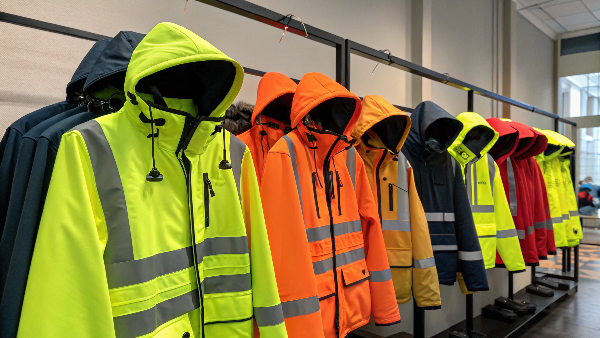
The performance of your high-visibility clothing depends on it being clean. Dirt and grime can cover both the fluorescent and reflective materials, making them ineffective. However, harsh cleaning methods can be just as bad. Chemicals like bleach can strip the fluorescent dyes, and high heat from an iron or a dryer can melt the glass beads or prisms in the reflective tape. This is why we always include clear care instruction labels on our garments. Following these instructions helps you protect your investment and, more importantly, keep your team safe. Proper care ensures the garment performs as designed for its entire service life.
Washing Do's and Don'ts
Following a few simple rules can dramatically extend the life and effectiveness of your safety apparel.
| Do | Don't |
|---|---|
| Wash with similar colors. | Use chlorine bleach or harsh chemicals. |
| Use a mild detergent. | Use fabric softeners, which can coat the fibers. |
| Tumble dry on low heat or hang to dry. | Iron directly on the reflective tape. |
| Zip up zippers and fasten velcro before washing. | Dry clean (unless the label specifically says it's ok). |
When a garment becomes faded, torn, or permanently soiled, it should be replaced immediately.
What is the difference between enhanced visibility11 and high visibility?
Is "bright" clothing the same as "high-visibility" clothing? Not at all. This confusion can lead to buying non-compliant, unsafe apparel for your team and workplace.
High-visibility clothing must meet specific ANSI/ISEA 107 standards for fluorescent and reflective material. Enhanced visibility garments use bright colors and reflective tape but are not certified to a standard, offering less protection and are for lower-risk environments.
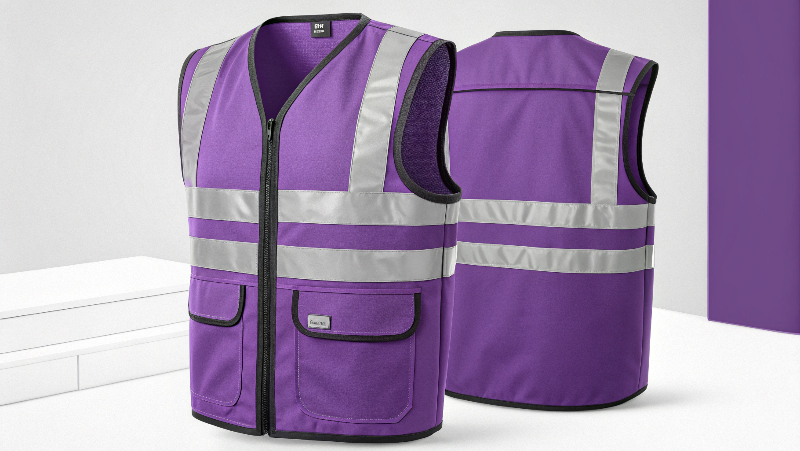
This is a critical distinction we often explain to new clients. The term "high-visibility" is a regulated category. To be called "high-visibility," a garment must be tested and certified to meet a performance standard like ANSI/ISEA 107. This means it has a guaranteed level of performance. "Enhanced visibility" is a marketing term. These garments are brighter than normal clothing and provide more conspicuity, but they are not a substitute for true hi-vis apparel in work zones where a standard is required.
Defining the Categories
Understanding their intended use is the easiest way to tell them apart.
| Feature | High Visibility Apparel (Hi-Vis) | Enhanced Visibility Apparel |
|---|---|---|
| Standard | Certified to meet ANSI/ISEA 107 or similar. | No specific performance standard. |
| Use Case | Workers exposed to moving traffic or equipment. | Low-risk areas; joggers, event staff. |
| Material | Certified fluorescent and retroreflective materials. | Bright colors, may have some reflective tape. |
| Compliance | Legally required for many jobs. | Not a substitute for certified hi-vis gear. |
When you need to protect workers from the hazards of moving traffic, you must use certified high-visibility apparel. As a manufacturer, we focus on producing certified garments because safety and compliance are our priorities.
Can you customize high viz clothing12?
Want your brand logo on safety vests, but worried it’s not allowed? You absolutely can customize them. You just need a partner wh
-
Explore the key features that make safety gear effective and compliant. ↩
-
Understand the role of reflective materials in enhancing worker visibility and safety. ↩
-
Discover best practices to ensure worker safety through proper clothing choices. ↩
-
Explore the science behind fluorescent materials and their role in visibility. ↩
-
Understand the Canadian standards for high-visibility clothing and their requirements. ↩ ↩
-
Discover the significance of high-visibility clothing in various work environments. ↩
-
Understand how different work environments dictate specific visibility requirements. ↩
-
Learn how retroreflective tape improves visibility for workers at night. ↩
-
Understand the importance of compliance in workwear to ensure safety and legal adherence. ↩
-
Get tips on properly cleaning reflective materials to maintain their effectiveness. ↩
-
Clarify the distinctions between enhanced and high-visibility clothing for safety. ↩
-
Find out how to effectively customize high visibility clothing without compromising safety. ↩

